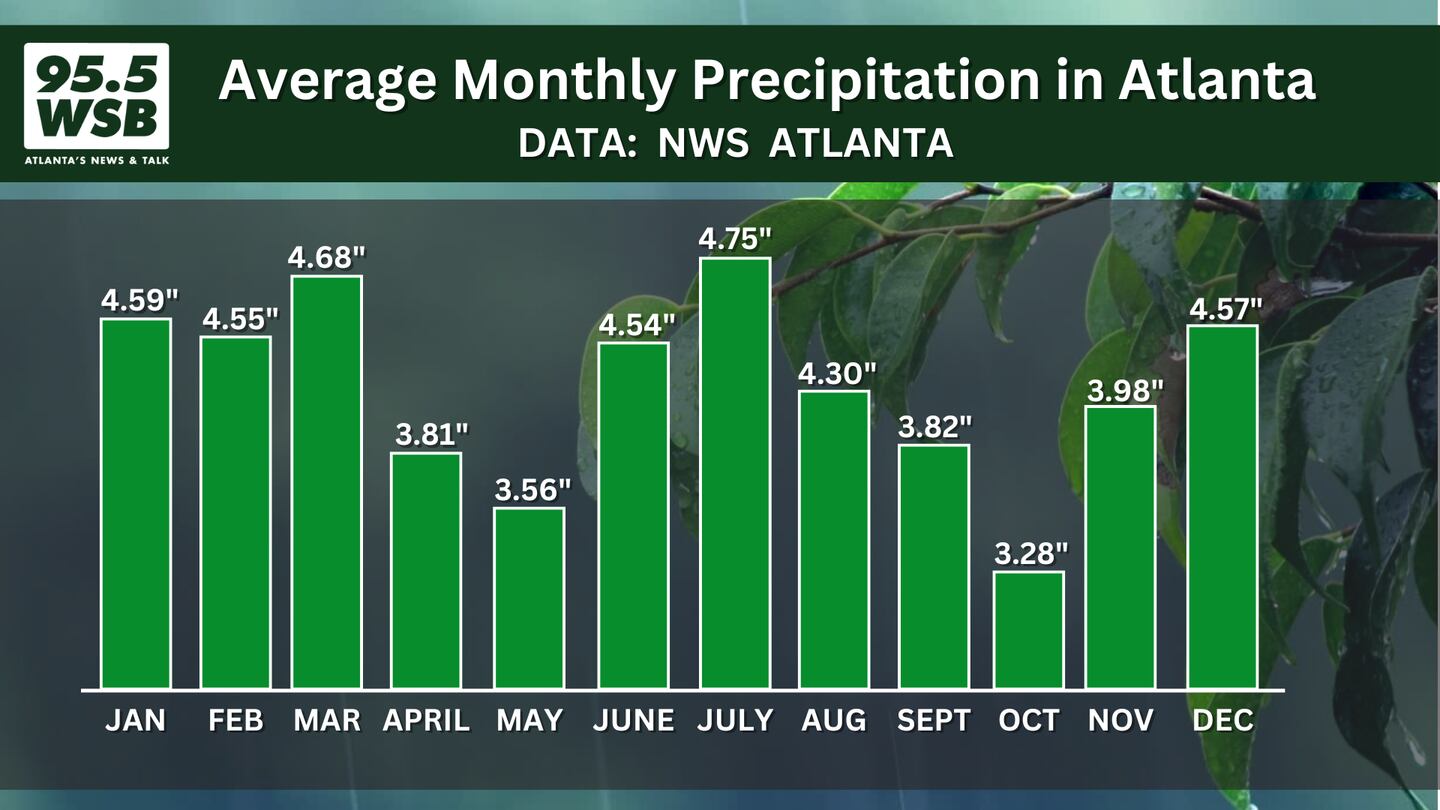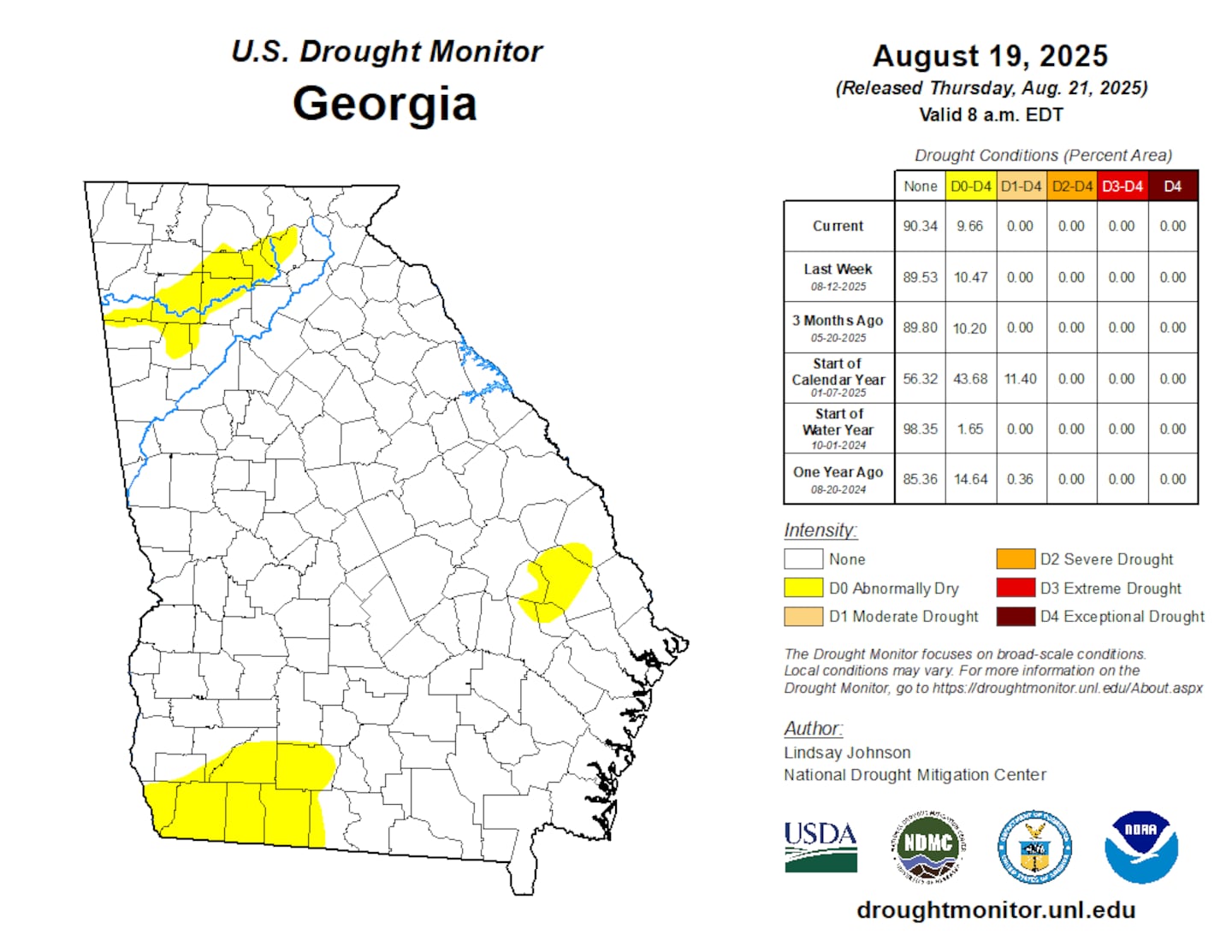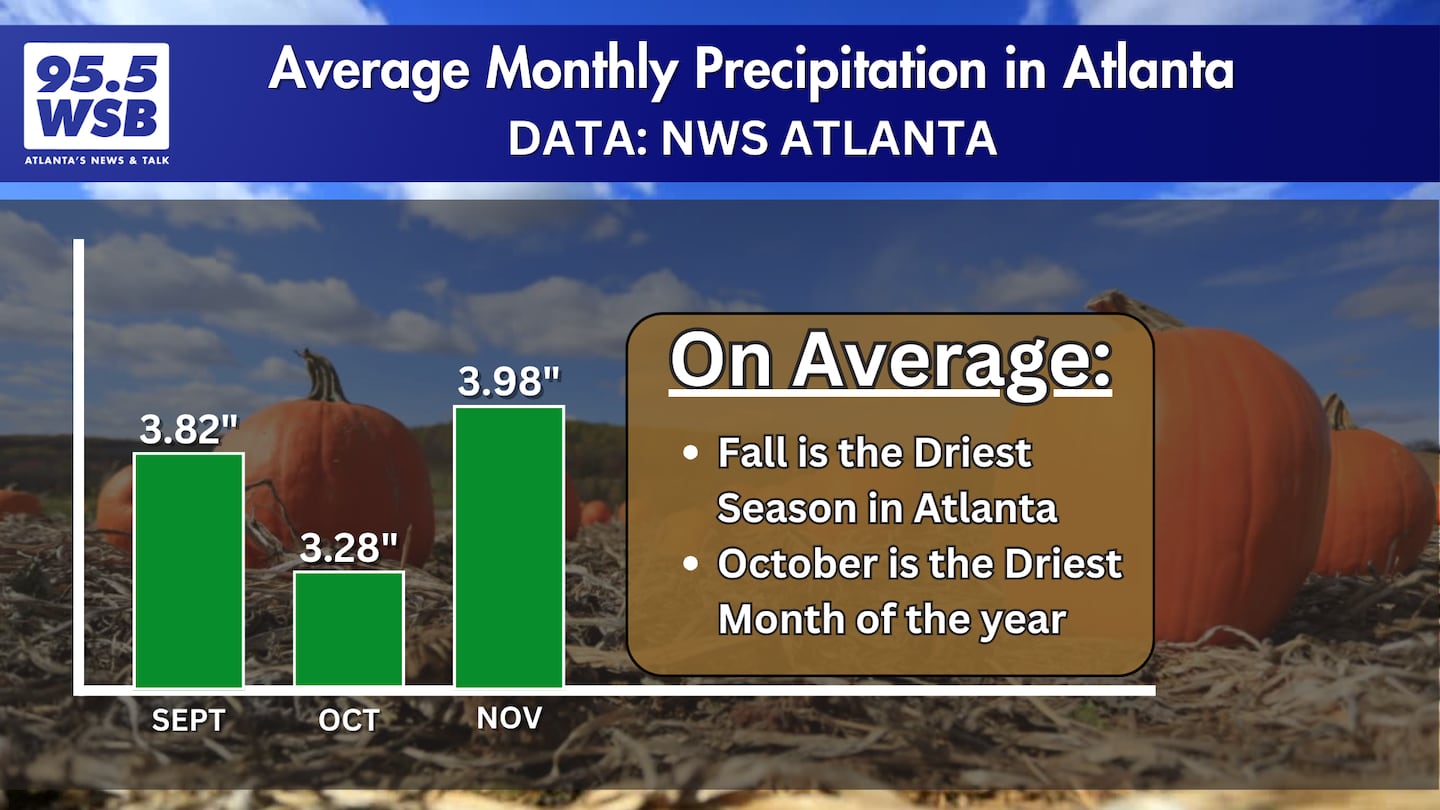I don’t know about you, but it’s practically rained every day at my house for the past several weeks.
In fact, the Atlanta Airport has registered rainfall for 15 out of the past 20 days during the month of August!
This is on top of an already soggy June, and May was a soaker as well.
This summer, the only “dry spell” occurred in July, when nearly three weeks of dry conditions prevailed as temperatures soared the the upper 90s and 100 degree mark during the final days of the month.
Silver lining to all of the rain: Drought conditions through the state of Georgia remain mitigated as we approach the driest months of the year.
During an average summer (June 1 to August 31), Atlanta receives 13.59 inches of rainfall.
With roughly 2 weeks left in August, Atlanta is already registering 11.12 inches of rain for the summer, and more precipitation is in the forecast through the weekend.
As a result, only a meager amount of “Abnormally Dry” conditions prevail in the state of Georgia, including northern Metro Atlanta.
Statistically, Fall is the driest season for North Georgia, but with a healthy amount of rainfall and moisture in the soil, impacts to Georgia’s apple orchards and pumpkin farms should be limited.
What to Do After Heavy Downpours and Flooding Rains
Summer storms can unleash copious amounts of rain in a very short amount of time. Some storms can drop as much as 2-3 inches of rain in under an hour!
I talked with UGA Professor and Turfgrass Specialist Clint Waltz about how to care for our lawns given the highly variable rainy conditions we experience during the summer.
Waltz recommends exercising patience with your lawn after a heavy rain.
“Avoid mowing over flooded lawns, because soil is more prone to compaction whenever they are wet.”
What to Do During a Drought
Fall is the dry season in Atlanta, and often, temperatures still climb into the upper 80s to low 90s.
After weeks of hot temperatures and little to no rainfall, your lawn may be looking more like straw than a lush, green carpet.
Waltz notes that an ounce of prevention can save a pound of frustration finding a cure.
“During a drought, prevent lawn damage by keeping proper mowing heights, and continue to fertilize the lawn.”
Mowing heights are important because they optimize the root depth of the grasses in your lawn.
“The greater the rooting depth, the more soil volume to pull water and nutrients out of. So if I have a greater depth to pull from, I can make it from one rainfall event to the next, and hopefully keep maintaining quality in our lawn, too,” Waltz says.
“But you have to do that before you get to the stress event of the drought. Once you get to the drought, it’s a matter of hopefully you have done all you can do.”
Talk Up a Storm With Me!
Facebook: Christina Edwards WSB
Instagram: ChristinaWSBwx
Twitter: @ChristinaWSBwx
TikTok: @ChristinaEdwards955WSB
©2025 Cox Media Group











